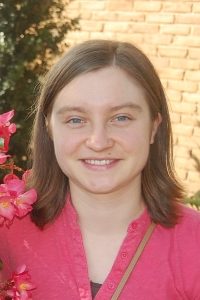Mennonite Health Journal
Articles on the intersection of faith and health
Water: Essential to Life and Health
Lyubov Slashcheva
from Mennonite Health Journal, Vol. 17, No. 2 – May 2015
Water, in its three physical states, is what distinguishes Earth from other planets. The relative presence of water also determines whether a specific area on our globe will sustain life.
From ancient times, water has been the source of conflicts such as those described in the Genesis chapter 26, where Isaac struggles for fresh water rights in wells that either his father Abraham or he dug.1
Even in today’s world, where plumbing allows us to store and transport water to places that would usually lack it, most metropolitan centers are associated with a river or other major water sources. As a society dependent on agriculture, abundance of fresh water is a major concern for the survival and thriving of both industrialized and developing nations.
The reality of water shortage has recently been discussed in news coverage across the world:
- As California enters a fourth year with water rationing policies and practices, scrutiny of industry reveals that 80% of human water use is linked to agriculture.2 Innovative adaptations to the reality of drought have included conserving even sewage water, developing dry farming techniques, and implementing lawn alternatives.
- The largest city in South America, Sao Paulo, Brazil, faces extreme drought conditions with threats of running out of water by June 2015. This has caused many to question traditional land-use practices involving deforestation of the Amazon Forest.3
- Further from most of our homes, East Africa continues to struggle with water shortages that exacerbate food shortages, attracting the aid of many foreign organizations without extinguishing the needs.4
Whether in your neighborhood or halfway across the globe, water shortage is occurring and prompts each of us to consider our stewardship practices of the essential substance.
In the tradition of Living More With Less, Doris Janzen Longacre creates space for sharing practical pearls of conserving water in our daily home living.5 Mennonite Central Committee (MCC) has been involved with in projects to ensure access to enough clean water in both relief and development contexts.6 These efforts have included providing water collection/storage systems, as well as education for sanitation and hygiene practices.
As healthcare professionals, we have a unique role in responding to the concerns of water shortages and their effects on the health of individuals and communities. We look forward to engaging your perspectives as faithful disciples and healthcare professionals on this issue at the Annual Gathering in Harrisburg, Pennsylvania on July 19-21, 2015.
- Genesis 26:12-33
- Oy N and Klein A. 2015. How Much Water Do Some of California’s Thirsty Crops Use Each Year? NBC4 News. Published on May 8, 2015. <http://www.nbclosangeles.com/news/local/Water-Use-California-Crops-Drought-302987411.html>.
- Hawes W. 2015. Drought in São Paulo: Brazil’s Megacity on Verge of Crisis as Water Rationing, Shutoffs Continue. Global Research. Published on March 28, 2015. <http://www.globalresearch.ca/drought-in-sao-paulo-megacity-on-verge-of-crisis-as-water-rationing-shutoffs-continue/5439225>.
- East Africa Drought Crisis. Global Giving. <https://www.globalgiving.org/east-africa-drought-and-famine-relief/>
- Longacre D. J. 1980. Living More with Less. Homekeeping: Water Conservation, pg 153-154.
- Food and Water. Mennonite Central Committee Website. <http://mcc.org/learn/what/food-water>.
About the author
 Lyubov Slashcheva, DDS graduated in 2016 from Virginia Commonwealth University (VCU) School of Dentistry in Richmond, Virginia. After completing her undergraduate studies at Eastern Mennonite University in 2011, she interned with the Luke Society in Honduras and Peru for four months in a public health service role. She was a National Health Service Corps Scholar and has engaged in research and service opportunities pertaining to Latino, geriatric and special needs populations. She has received numerous honors for her research and service endeavors and during her student years held leadership positions on the VCU campus, including the Christian Medical and Dental Associations chapter. In the spring of 2016, she moved to Iowa City, Iowa where she is in residency and doing postgraduate training in dental public health. She has also been active in leading worship/ music/ children’s education in her local congregation, and is a committed cyclist for commuting. She enjoys playing the flute, reading, and learning about different cultures. She anticipates four years of public health practice in an underserved setting following her studies.
Lyubov Slashcheva, DDS graduated in 2016 from Virginia Commonwealth University (VCU) School of Dentistry in Richmond, Virginia. After completing her undergraduate studies at Eastern Mennonite University in 2011, she interned with the Luke Society in Honduras and Peru for four months in a public health service role. She was a National Health Service Corps Scholar and has engaged in research and service opportunities pertaining to Latino, geriatric and special needs populations. She has received numerous honors for her research and service endeavors and during her student years held leadership positions on the VCU campus, including the Christian Medical and Dental Associations chapter. In the spring of 2016, she moved to Iowa City, Iowa where she is in residency and doing postgraduate training in dental public health. She has also been active in leading worship/ music/ children’s education in her local congregation, and is a committed cyclist for commuting. She enjoys playing the flute, reading, and learning about different cultures. She anticipates four years of public health practice in an underserved setting following her studies.
